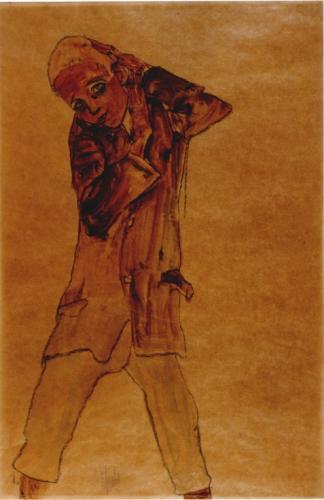-
-
-
-
Par MMaxi le 27 March 2007 à 00:31

George, Lord Digby and William, Lord Russel c. 1637, or earlier
Aristocratic portraiture operated broadly within the same parameters as Royal portraiture. Just as the monarch had reason to announce his humanity as well as his authority, aristocracy had a role and claimed a sensibility. ( From the evidence of the portraits, it sometimes seems as if some aristocrats were not able to look in both directions at the same time.) There might be a quasi-feudal duty to do again.
And martial readiness remained a virtue. However, in the mean time, to be warlike and pious was not enough. Again renaissance humanism had produced the solution to the problem of redundancy for aristocrats in the post-feudal age. It had rediscovered and re-present an ideal of nobility that could persist outside of the perilous conditions of feudalism.
While some people lived under the yoke of necessity and others had economic and social power sufficient to enable them to exploit their situation, the noblest human being was the one who was above both need and greed. The aristocrat, so long as he was sufficiently inured, could have the privilege of conducting himself disinterestedly. A life of aesthetic self-improvement could be the way.
MMaxi
-
Par MMaxi le 26 March 2007 à 23:26

The Deposition, 1611 central piece in triptych
Painting that would emulate Titian attempts to catch to catch the sensational aspects of things. What painting, as an art, shares with objects of sensation is visibility ; and vision is in the first instance the experience of being bombarded by stimuli of colour . Rubens attempted to evoke all the senses in his work. It is enough to refer to the grimy, bruised and bloody foot of Christ touching the pale skin of the Magdalen's shoulder in his 1611 Deposition. But the important thing for him is the engagement of the senses. The role of the eye in the context of painting is self-evident.
-
Par MMaxi le 26 March 2007 à 23:12

Man with a glove, c. 1520
Tiziano Vecelli or Vecellio (c. 1488-90 – August 27, 1576), better known as Titian, was the leader of the 16th-century Venetian school of the Italian Renaissance. He was born in Pieve di Cadore, in the Cadore territory, near Belluno (Veneto), in Italy, and died in Venice. During his lifetime he was often called Da Cadore, taken from the place of his birth.
Recognised by his contemporaries as "the sun amidst small stars" (recalling the famous final line of Dante's Paradiso), Titian was one of the most versatile of Italian painters, equally adept with portraits and landscapes (two genres that first brought him fame), mythological and religious subjects. Had he died at the age of 40, he would still have to be regarded as one of the most influential artists of his time. But he lived on for a further half century, changing his manner so drastically that some critics refuse to believe that his early and later pieces could have been produced by the same man. What unites the two parts of his career is his deep interest in colour. His later works may not contain vivid, luminous tints as his early pieces do, yet their loose brushwork and subtlety of polychromatic modulations have no precedents in the history of Western art.
-
Par MMaxi le 23 March 2007 à 13:54

Nude Girl in yellow coat, 1911, Albertina, Vienna
In 1910, the year he executed his first breakthrough Expressionism works, Egon Schiele was scarcely twenty years old-four years younger than Oskar Kokoschka,
five years younger than Max Oppenheimer.
Youthful prodigies are less common in the visual arts than in music or literature, perhaps because artists require more extensive technical training to master the skills necessary to their form of creative expression.
Schiele achieved artistic maturity at an exceptionally early age, but his emotional development was at best average.
Consequently, he dealt more directly than most artists with the psychological problems of late adolescent and early adulthood, exploring anxieties and obsessions that adults tend to repress or sublimate.
That maybe why, even in today's age of anything-goes morality, Schiele's work still retains the ability to shock.
Schiele remained indefferent to, if not proud of, his fractious relationship with society at large. He felt that is special status as an artist should grant him immunity from normal standarts of behavior. He did not particularly care if people refused to buy his paintings. " I am glad there are so few who can recognise art," he noted in a letter to the surely unappreciative Czihaczek. " That is constant proof of it's divine nature"
Nor did Schiele seem particularly concerned that, once again, he was running afoul of community standards in Neulengbach. As he had in Vienna and Krumau, Schiele was accustomed to wooing Children and adolescents to his studio and persuading them to pose.
But whereas the children who had modeled for him in Vienna were unsupervised vagrants, the children of Neulengbach had strict, concerned, middle-class parents.
It was thus that Schiele came unwittingly to operate on the fingers of the law.
It took only one untoward incident to knock him into the abyss behond.
MMaxi
-
-
MMaxi Madeiraman










